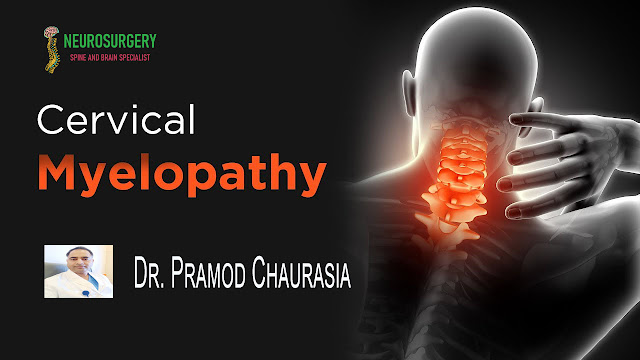Cervical Spondylotic Myelopathy (CSM) is the most common spinal cord disorder in people over 55.
In most cases, people get well by the non-surgical treatments. However, if your Cervical Spondylotic Myelopathy symptoms persist or worsen despite non-surgical treatment, Dr. Pramod Chaurasia may advise you to have surgery.
The purpose of surgery is to alleviate symptoms by decompressing or relieving pressure on the spinal cord. This entails removing any bone or soft tissue that may be obstructing the spinal canal's flow. This relieves pressure by giving the spinal cord more room.
Continue reading this article to know if you are a candidate for Cervical Myelopathy surgery.
Are You A Candidate Of Cervical Myelopathy Surgery?
Patients with progressive neurologic changes and signs of severe spinal cord compression or spinal cord swelling are candidates for surgery. Some of the neurologic changes may include –
- Arms or legs weakness
- Nausea and numbness in the hands
- Problems with fine motor skills
- Gait changes
- Imbalance issues
What Surgical Procedures Are Involved To Treat CSM?
The following are the four surgical procedures most commonly used to treat CSM –- Diskectomy and Fusion of the Anterior Cervical Spine
- Anterior Cervical Corpectomy and Fusion
- Laminoplasty
- Laminectomy
Is Cervical Myelopathy Surgery Risky?
Cervical Spondylotic Myelopathy, like any other surgery, carries risks. Complications may arise due to the approach used, the bone graft, healing, or long-term changes. In general, elderly patients have a higher rate of surgical complications.
Some of the other potential risks for any CSM include –
- Nerve damage
- Spinal cord injury
- Infection
- Anesthesia reaction
- Failure to relieve symptoms, resulting in the need for additional surgery in the future
- Tear in the nerve-covering sac (dural tear)
How Much Time Do You Need To Recover?
Typically, you will spend one or two days in the hospital after surgery. This, however, will vary depending on the type of surgery you had and the number of disc levels involved. On the first day after surgery, the majority of patients are able to walk and eat.
Outcomes
Whatever approach is used, the goal of surgery is to stabilize the spine and prevent neurologic problems from worsening. A secondary goal is to reduce neck pain and any other motor, sensory, or neurological symptoms that may be present.
Remember, the outcomes will differ from one patient to the next.




0 Comments